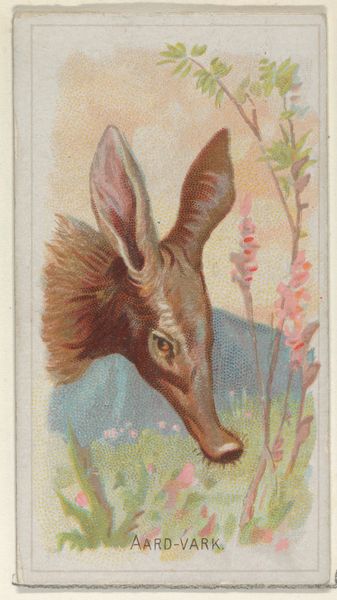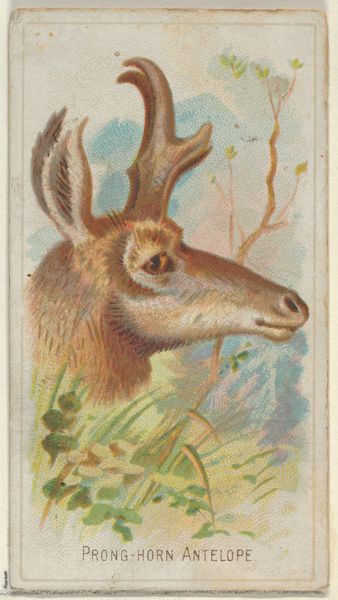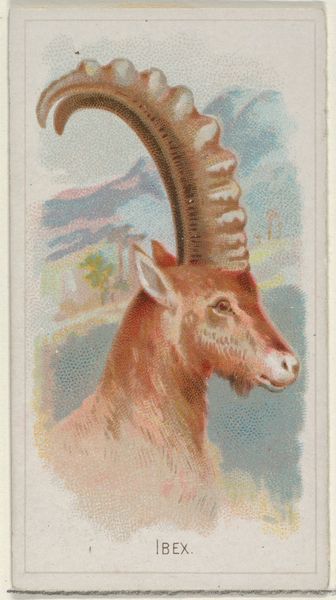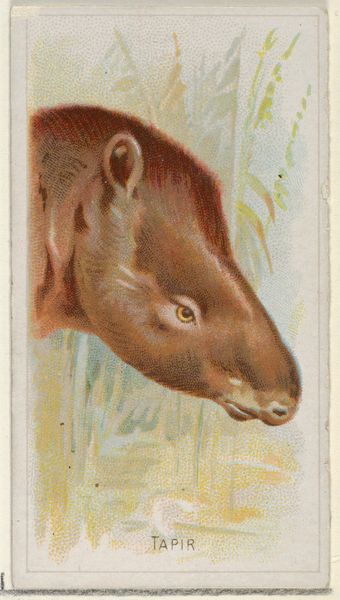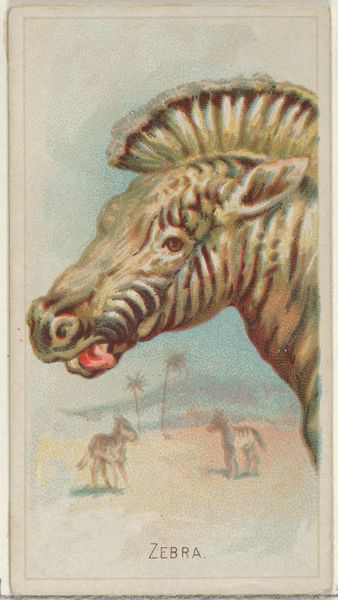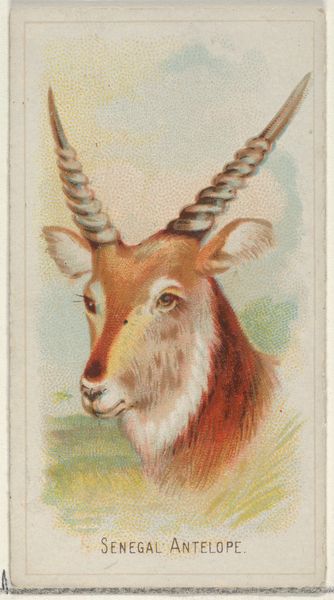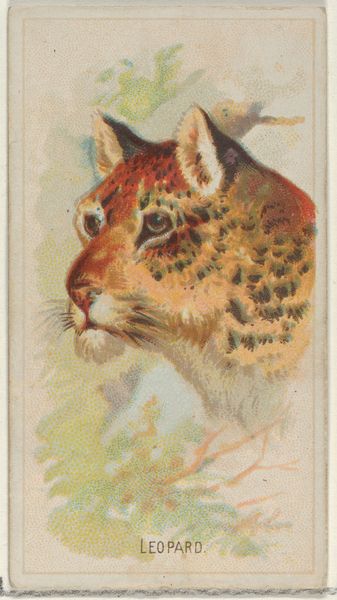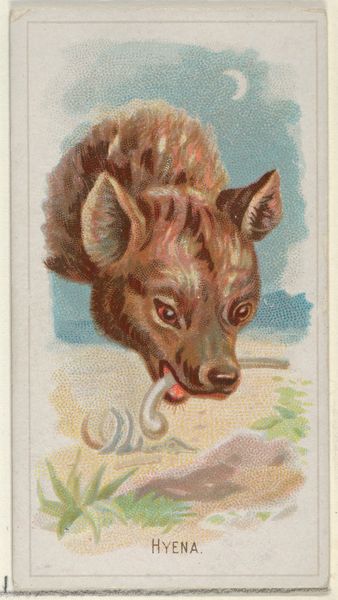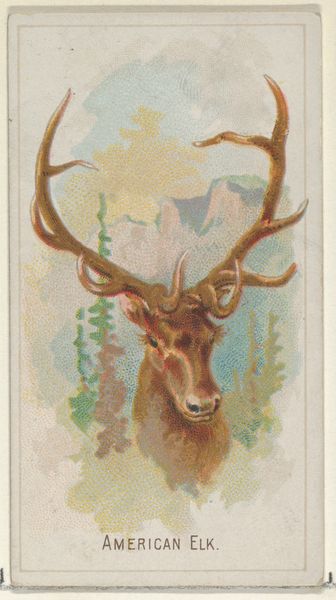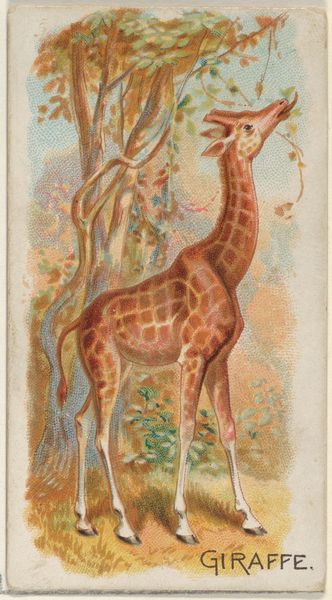
Giant Kangaroo, from the Wild Animals of the World series (N25) for Allen & Ginter Cigarettes 1888
0:00
0:00
drawing, print, watercolor
#
drawing
#
animal
# print
#
watercolor
#
watercolour illustration
#
genre-painting
#
naturalism
#
watercolor
Dimensions: Sheet: 2 3/4 x 1 1/2 in. (7 x 3.8 cm)
Copyright: Public Domain
Editor: This is "Giant Kangaroo," a watercolor print made by Allen & Ginter in 1888. It was included in a series called "Wild Animals of the World" and was distributed with cigarette packs! I'm immediately drawn to the naturalistic rendering of the kangaroo’s head. What stands out to you? Curator: The fact that it was part of a cigarette card series. Consider the materiality: watercolor on paper, mass-produced and distributed not through art galleries but with consumer goods. This collapses the traditional hierarchy between 'high art' and everyday ephemera, questioning notions of artistic value determined solely by unique creation. Who was consuming these cigarettes and internalizing these depictions of ‘exotic’ wildlife? Editor: So, it's not just about the image, but about how and where it was circulated? How does the social context influence our reading of the image? Curator: Precisely! The image is naturalistic, but also mediated through the lens of colonialism and consumerism. What's not pictured? The kangaroo's environment. This suggests control and commodification. Think about the labor involved in producing thousands of these cards, and the resources extracted to create the paper and inks. It is about power relations inherent in representing and consuming the ‘natural world’. Editor: That makes me see it differently. It's no longer a simple illustration, but an artifact embedded in systems of production and consumption. Does the watercolor medium also inform how we should perceive this? Curator: Yes, watercolor, easily reproduced via printing technologies, contributes to its accessibility as a consumer good, removing some of the 'aura' surrounding original artworks. How does the depiction natural history become entangled with a culture of mass production and a drive to collect the world around us? Editor: Fascinating. It’s like the kangaroo is being presented to us, neatly packaged and ready for consumption along with our cigarettes. Curator: Exactly! Considering process, materials, and the socio-economic context, can challenge preconceived notions about what constitutes "art" and what its functions are beyond mere aesthetics. Editor: I'll definitely consider how such things shape its value and influence when examining art in the future.
Comments
No comments
Be the first to comment and join the conversation on the ultimate creative platform.
